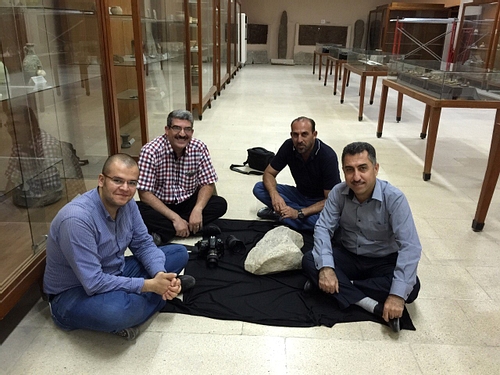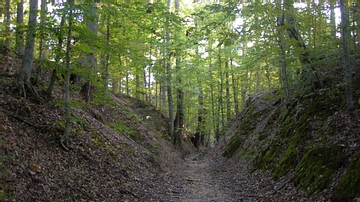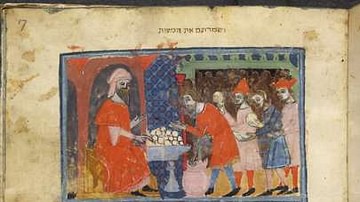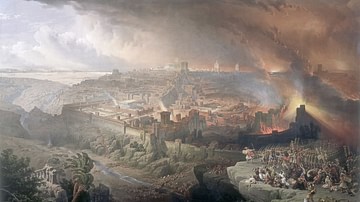The Story Begins from a Dead End
August 25, 2015 was a very hot day of summer but its omen was a very promising one! That day, I was with my friend, Mr. Hashim Hama Abdulla, director of the Sulaymaniyah Museum in Iraq, walking in the main hall of the Museum. So far, I had visited the museum innumerable times. I pointed towards something on the floor, which I had noticed on several occasions but I had never inquired about. 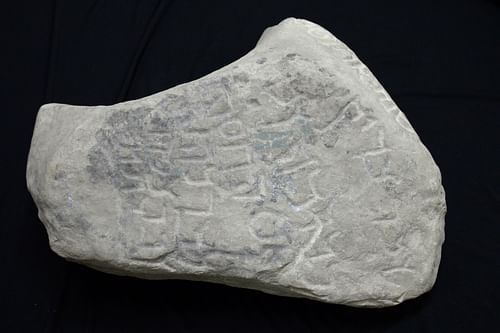
The upper surface of the so-called "Gopala Rock", inscribed with five lines, thought to be Aramaic. On the upper right margin, a single separate line of inscription also appear.
There was a rock, which was displayed on the floor directly, without any description. It was relatively dirty, strange, and irregular in shape and was inscribed with what appeared to be an ancient language. It was abutting the wall besides one of the large wood display cases. I'm sure, you can easily by-pass and miss it if you visit that hall. Nothing is striking or interesting about it, in addition to being placed in a non-attractive hidden space. “What is this? I forgot to ask you many times Kak (brother) Hashim?” These were the opening remarks of mine to Mr. Hashim. “It is a long story and we are waiting the results of the transliteration of these Aramaic or maybe Hebrew inscriptions”, Mr. Hashim replied. “It was found at the village near Bazian in late 1970s”. This was the last information I got from him that day.
Undusting the Lens
With his help, I got access to the archives of the museum to have a clearer idea about this “rock”. This is the summary of the “history” of the rock (coming from the archives of the museum and the information I got later on from Mr. Hashim):
- While working in the field, Mr. Saman Mohammad Siddiq, an agricultural engineer found it in an apple farm, which lies in the village of Gopala (or Kopala) (Kurdish: ﮔوﭖاله), Bazian (or Baziyan; Kurdish: بازيان) Town (35°35'36.41"N; 45° 8'32.51"E). The village lies in the western part of the Governorate of Sulaymaniya, Iraqi Kurdistan.
- He found it in the year 1979 CE and delivered it to the Sulaymaniyah Museum in early 1980s (at that time the Museum was closed to the public because of the Iraq-Iran War).
- The artefact is a rock, which has no particular shape and it is irregular in outline and borders.
- Its maximum dimensions are 46 cm (length) x 39 cm (width) x 21 cm (height).
- One surface (the upper one) is inscribed with five lines of Aramaic text. On one of the upper margins, there is one line of Aramaic inscription as well.
- The most interesting point was that it was stored within the museum's repository, un-numbered, unregistered, and not displayed until December 25, 2001 CE. It was unnoticed by and unknown to the museum's staff and it was forgotten among the repository's contents. On that day, Mr. Saman himself paid a visit to the museum (the museum was closed in 1980 CE, reopened very shortly after the Iraq-Iran War in 1989 CE and was closed again, and finally re-opened in the year 2000 CE). Mr. Saman told Mr. Hashim about this rock and the story behind it. This was the event which brought it once again to life and revived its spirit.
- The rock was registered on the day of December 25, 2001 and was given the registration number of “SM 1002” (Kurdish and Arabic: م. س. 2001). Mr. Hashim registered it and displayed it within the main hall the following day but without any description.
Once again, destiny strikes and imparts a long-lasting amnesia. The rock has been on display since then, but no one cares about it; a vagrant orphan lost in the arid desert, I describe it!
The Inscription: An About Turn
I contacted Mr. Hashim a few weeks ago (and that would be after almost two years), asking him about the rock. He gave me the contact details of Professor Narmeen Mohammed Amin Ali, a Kurdish archaeologist living in France. She was very cooperative! Dr. Narmeen said that a French archaeological team was doing excavations as well as studying Aramaic, Hebrew, and Syriac texts, scripts, and inscriptions in Kurdistan from 2011 to 2016. The team was headed by Professor Vincent Deroche, assisted by Professor Alain Desreumaux and herself. Professor Narmeen's main work was on the ruins of an ancient Christian church in Bazian.
The team was visiting the Museum in mid-2013 and Mr. Hashim, by chance, told them that this rock was found in Bazian and he wondered whether they could find what it says. The surprise was that Professor Alain commented that this is not Aramaic, this is Hebrew most likely. Professor Alain took pictures of the rock, drew the inscriptions, and transliterated it over a period of one month. The article about the inscription will be published in the journal “Etudes mésopotamiennes - Mesopotamian Studies” in April 2018 and is titled “une inscriptions hébraïque médiévale découverte dans Bet Garmaî (Kurdistan d'Irak) dans: Recherches au Kurdistan et en Mésopotamie du Nord)”. The article is in French and the English translation reads “A medieval Hebrew inscriptions discovered in Bet Garma (Kurdistan of Iraq), Kurdistan and Northern Mesopotamia Research”. This is exclusive information, so stay tuned until then!
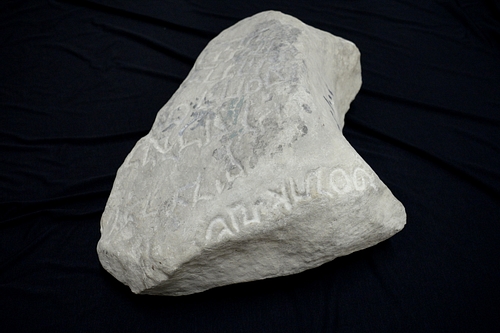
What does this Rock Represent?
This is a tombstone, which was commissioned by a man in memory of his deceased mother, “Siporah daughter of Dan”, who will rest in peace and be blessed in the Paradise of Eden. The inscribed date is the Seleucian year 1669 (which roughly corresponds to the year 1357/1358 CE). Professor Narmeen said that there is a similar tombstone dating to the same period, currently housed in the Iraq Museum in Baghdad.
So, it was a tombstone, inscribed 700 years ago in the Hebrew language for a deceased Jewish woman. Bang bang! In my opinion, although the text is short, it is a remarkable surviving evidence confirming the existence of a multi-religious environment in Iraq. The so-called Abrahamic Religions (Judaism, Christianity, and Islam) lived peacefully together for many centuries in Mesopotamia. The people in Bazian are currently Kurdish in ethnicity and Islamic in religion. The presence of this Jewish tombstone (undisturbed and unvandalized) in addition to the ruins of a Christian church within that same small place undoubtedly is a marker of a highly civilized, multi-cultural, multi-ethnic, and multi-linguistic society, which had melted and blended altogether, producing one solid and united body, living happily and friendly with each other for several generations. My parents once told me that many of their neighbours including their best childhood friends [in 1930s/1940s CE] were Jewish. Jewish people “were” one of the cornerstones of the Iraqi and Mesopotamian society. The demographic turmoil in the Middle East seems to continue, endlessly, for the benefit of whom?!
Lastly, no archaeological work has been done on the location where the tombstone was found. I think if we find the skeleton or at least some bones of that woman, we may, who knows, trace her offspring through DNA analysis! Where are her offspring now?
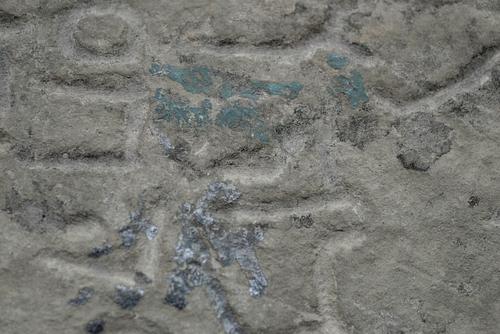
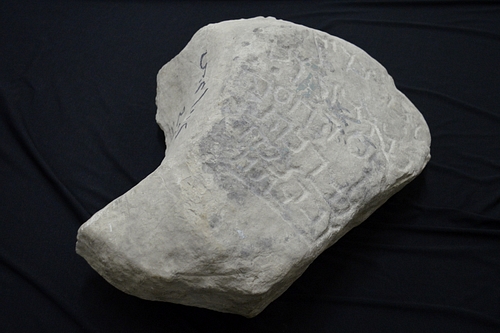
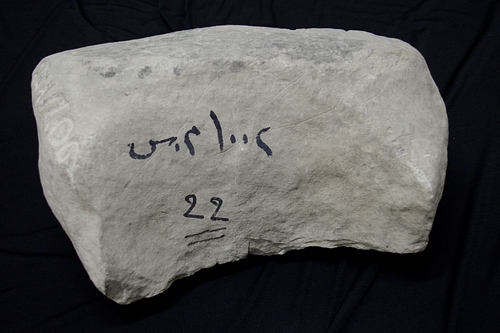
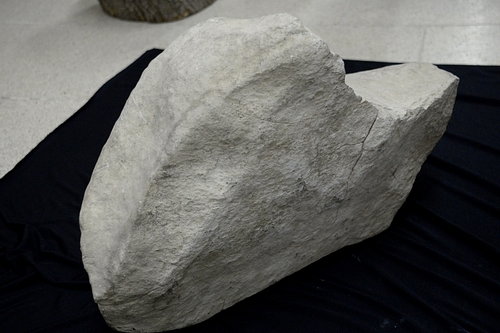
A behind-the-scenes image at the main hall of the Sulaymaniyah Museum, Iraqi Kurdistan! From left to right: Siamand (my friend), me (Osama, the author and the cameraman), Khamis (an engineer working in the Museum, and Hashim (Director of the Museum). I shot 212 images of the rock, using 3 lenses and a Nikon D610 camera.
I'm very happy to be the first one to share this very important discovery with the rest of the world through this article. I'm very grateful to Mr. Hashim Hama Abdullah and Professor Narmeen Mohammed Amin Ali for their kind help and cooperation. A special gratitude goes to Professor Alain Jacque Desreumaux, who kindly agreed to share the tombstone's information with the public.
Everything that has existed, lingers in Eternity.
Agatha Christie.

